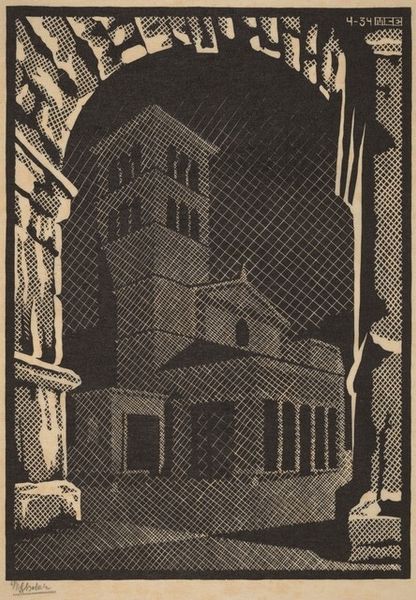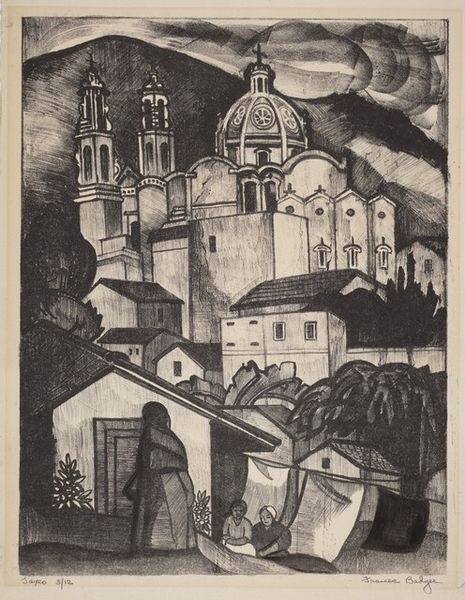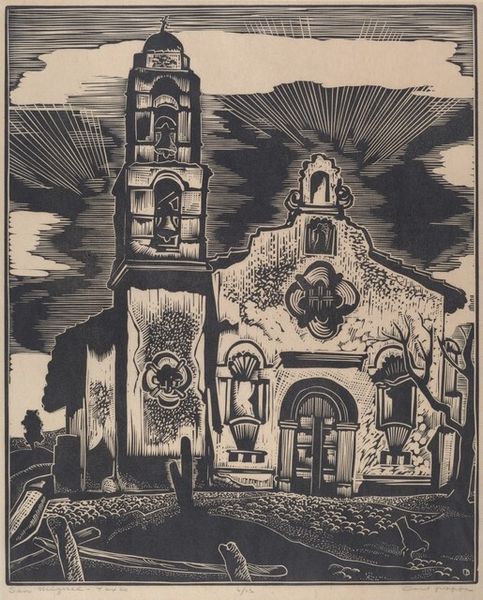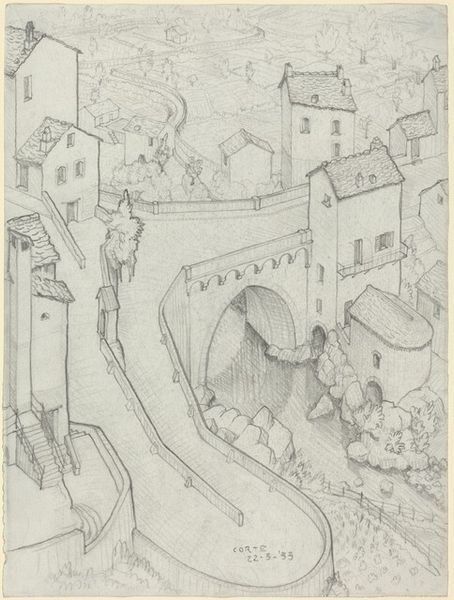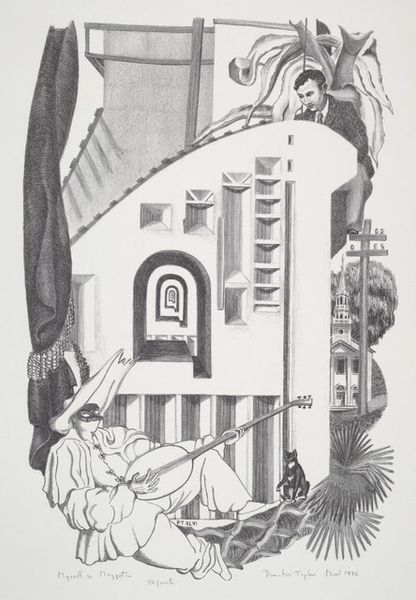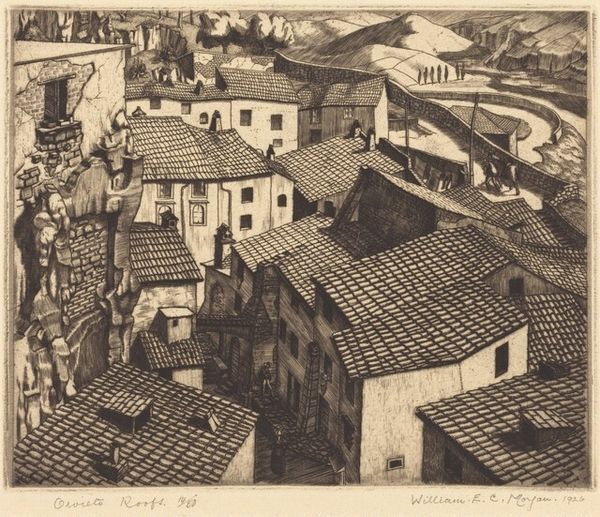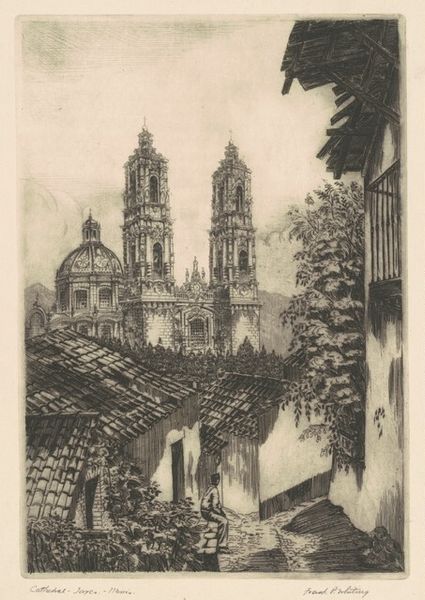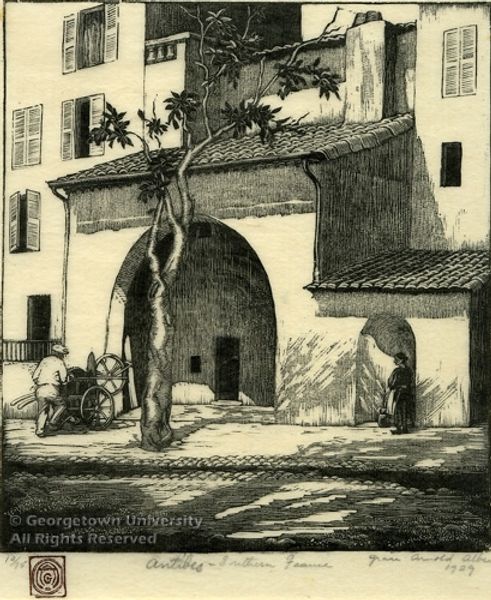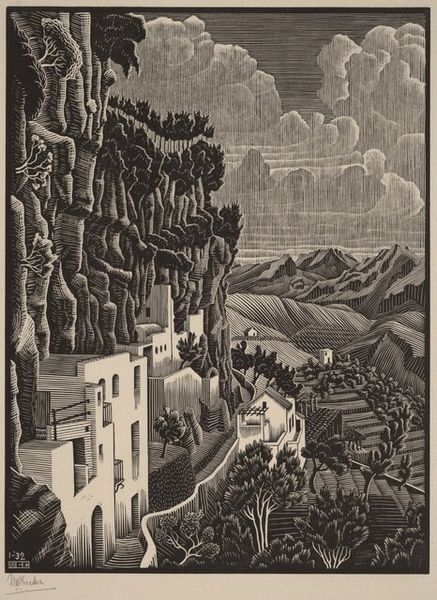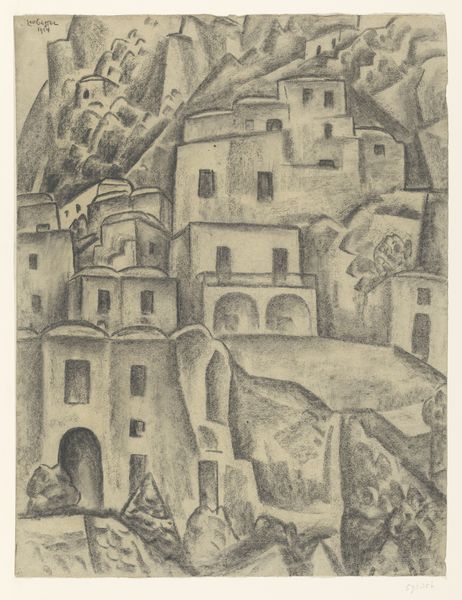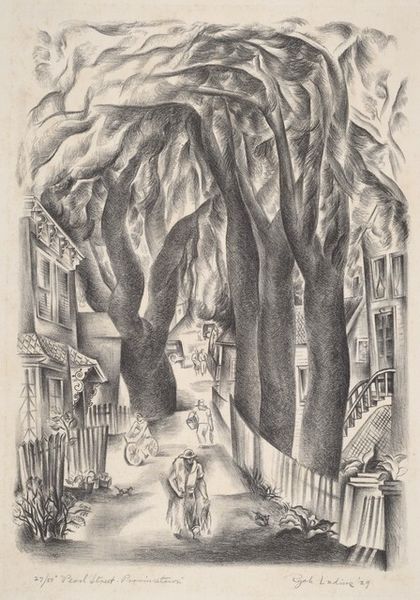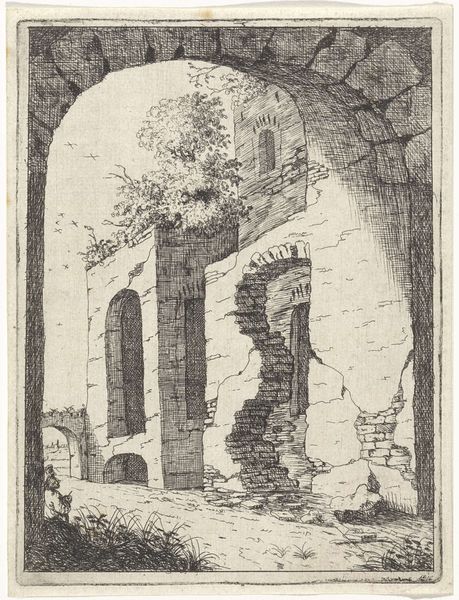
print, engraving, architecture
# print
#
landscape
#
engraving
#
modernism
#
architecture
Dimensions: sheet: 41.12 × 32.07 cm (16 3/16 × 12 5/8 in.) image: 31.43 × 22.23 cm (12 3/8 × 8 3/4 in.)
Copyright: National Gallery of Art: CC0 1.0
Curator: M.C. Escher's 1932 engraving, titled "San Cosimo, Ravello," presents a stunning architectural landscape nestled amidst rocky terrain. What are your first impressions? Editor: It feels so secluded, almost hidden. The interplay between the bright, geometrically pure buildings and the rough, dark cliff face creates this very compelling contrast, like civilization trying to hold its own against the raw power of nature. Curator: Precisely! Escher was deeply fascinated by architectural spaces, and here, he portrays the monastery as an integrated part of the environment, rather than a separate structure. He positions architecture to exist harmoniously with natural forms. This challenges traditional representation of architecture and landscapes in art history, which typically treat them as distinct subjects with very clear and sometimes very antagonistic power relations. Editor: Absolutely. I think about that interplay between the man-made and the natural environment in relation to power; I see how the hard-won human spaces depend and yet are defined by the unyielding landscape, as though they are at its mercy. The modernist simplification of shapes here also carries a political punch – it is like the scene represents a tension of control that mirrors our modern relationship to the land itself. Curator: Exactly. Escher also often explores the way images function in public and private life. I think we can perceive here that this very unique viewpoint captures the spiritual dimension of isolation that’s critical to monastic communities – something beyond everyday representation, but nevertheless central to their identity and public role in society. Editor: This brings an interesting perspective. It invites reflection on the community’s relationship with its natural and built environment and beyond this very local space into our modern world where many of us are facing challenges with these relations in a wider sense. What an achievement that he could suggest all of that through precise lines in black and white! Curator: Indeed, it’s more than just a visual exercise; Escher pushes us to examine not just what we see, but how it’s situated within larger narratives, histories and lived experiences. Editor: Absolutely, engaging with art like this is less about seeing and more about realizing the political landscape behind it.
Comments
No comments
Be the first to comment and join the conversation on the ultimate creative platform.
